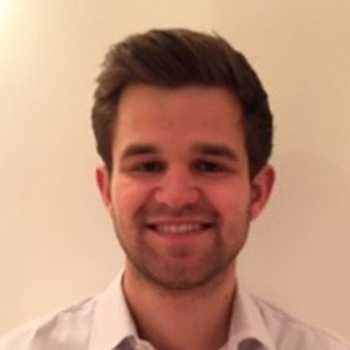Columns
Closing the border isn’t an option
There is no reason why Rohingyas will not be able to successfully integrate into Nepali society.
Maximillian Morch
Due to hostile environments in India and Bangladesh, Rohingyas fleeing genocide in Myanmar may look to Nepal for refugee, and in order to protect Nepal’s sovereignty and national security, they should be barred from entry into Nepal, argued Prasanna Mahat in her article entitled The Rohingya in Nepal published on January 1 in this newspaper. While the situation is undoubtedly complex, the idea that Nepal should deny entry to new arrivals is a problematic argument for several reasons.
First of all, the idea that welcoming refugees fleeing persecution harms or violates a state’s sovereignty at all, let alone to any meaningful or significant degree, is a highly contested notion. Moreover, the idea that refugees fleeing genocide poses a credible security risk to Nepal is as tiresome as it is false and plays into Islamophobic tropes. In Myanmar, the Rohingya have long been linked by the military and nationalist groups to security threats of Islamic terrorism. This hate speech directly helped fuel the genocide, as was clearly stated in Gambia’s recent genocide case against Myanmar at the International Court of Justice at The Hague. We need to be careful to avoid the repetition of such tropes, and to think critically about their validity before we allow them to play a cornerstone in any policy that would bar a vulnerable population from taking refuge.
Money matters
While it is true that Nepal is a least developed country and does not have huge financial resources to allocate for refugees, it is highly unlikely the state would have to bear a significant proportion of the costs involved. As an aside, the existing Rohingya in Nepal have hardly been inundated with help and assistance from the government’s own budget; so it is unlikely any new arrivals would suddenly receive government funding.
It is also pertinent to analyse the claim that Nepal had 800,000 refugees and asylum seekers in 2013, and that, as such, the state is overburdened and at a disadvantage in dealing with new Rohingya arrivals. The figure given is slightly incorrect. According to UNHCR (United Nations High Commissioner for Refugees) figures, in December 2013, Nepal was home to only 44,530 refugees and asylum seekers. The 800,000 figure, also provided by the UN, pertains to Nepal’s stateless population.
Of the 44,530 refugee and asylum seekers, the majority were Lhotshampas. There were 29,290 Lhotshampas living in refugee camps in Nepal, all of whom were assisted by the UNHCR. Meaning the Nepal government was not responsible for this cost. The figure also included 15,000 Tibetan refugees, many of whom had been living in Nepal for decades, and had developed strong community networks and support groups. What’s more, they were not dependent on government assistance for their livelihoods. Therefore, while almost 45,000 refugees in Nepal may sound like a higher number, yet still far lower than the 800,000 quoted, it actually places little burden upon the state. Most importantly of all, this figure is now outdated and does not reflect the current refugee population of Nepal, now stated to a total of 21,406 according to UNHCR, the Lhotshampa population is also much reduced, at 7,000.
In regard to the number of stateless Nepalis, many of whom are predominately Madhesis, they are in a different socioeconomic position to the Rohingya in Nepal. While statelessness does undoubtedly place restrictions on their access to government assistance, they are able to work and secure their livelihoods. Therefore, the conflation of Nepal’s stateless population with its Rohingya population, both the 600 or so already in Nepal and any future arrivals, is unhelpful; and has little bearing on the capacity of the Nepal government to provide assistance.
Further, at a policy level, the idea to increase security on the open border to stop Rohingyas entering Nepal is unfeasible and impractical. The open border is too porous for adequate monitoring of all unofficial border crossings; and security provisos for increased scrutiny on any Rohingyas attempting to enter Nepal is likely to increase levels of harassment and discrimination at border points. This would also encourage refugees to use unsafe or irregular migration channels, placing them at risk of human trafficking.
Refugees in history
Finally, Nepal is a nation built on migration and refuge. Rajputs fleeing persecution after the Sultan of Delhi, Alauddin Khalji, conquered Mewar in the 1300s came to Nepal, founding the house of Gorkha, from which came the modern Nepali state. Kashmiri Muslims arrived in the late 1800s fleeing British persecution after the failed 1857 Sepoy Mutiny (also known as First War of Indian Independence) or more recently, Tibetans arrived after Chinese repression following the Tibetan uprising in 1959. All of these refugee populations have integrated into Nepali society. There is absolutely no reason why what is likely to be a relatively small number of Rohingyas, given the citizenship or work permits they have asked for, will also not be able to successfully integrate into and play an important role in Nepali society.
I am in agreement with the author that Nepal should do its best to protect the Rohingyas already in the country, and it is true that it is a comparatively better host than India or Bangladesh, despite not being a signatory to the 1951 Refugee convention or the 1967 Refugee protocol. Yet, as tempting to some policymakers as refusing refuge maybe, it is not a workable, pragmatic or ethical solution to what is a complex problem.
***
What do you think?
Dear reader, we’d like to hear from you. We regularly publish letters to the editor on contemporary issues or direct responses to something the Post has recently published. Please send your letters to [email protected] with "Letter to the Editor" in the subject line. Please include your name, location, and a contact address so one of our editors can reach out to you.




 10.12°C Kathmandu
10.12°C Kathmandu















